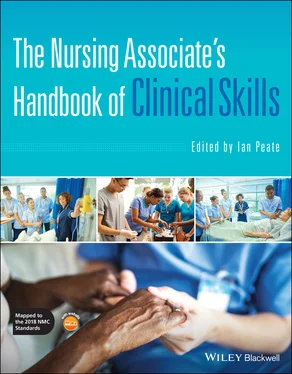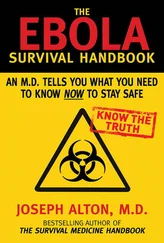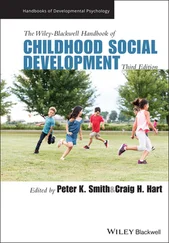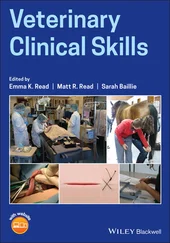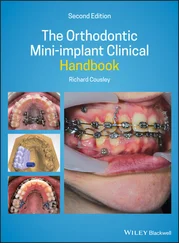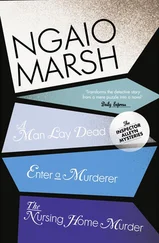The Nursing Associate's Handbook of Clinical Skills
Здесь есть возможность читать онлайн «The Nursing Associate's Handbook of Clinical Skills» — ознакомительный отрывок электронной книги совершенно бесплатно, а после прочтения отрывка купить полную версию. В некоторых случаях можно слушать аудио, скачать через торрент в формате fb2 и присутствует краткое содержание. Жанр: unrecognised, на английском языке. Описание произведения, (предисловие) а так же отзывы посетителей доступны на портале библиотеки ЛибКат.
- Название:The Nursing Associate's Handbook of Clinical Skills
- Автор:
- Жанр:
- Год:неизвестен
- ISBN:нет данных
- Рейтинг книги:4 / 5. Голосов: 1
-
Избранное:Добавить в избранное
- Отзывы:
-
Ваша оценка:
- 80
- 1
- 2
- 3
- 4
- 5
The Nursing Associate's Handbook of Clinical Skills: краткое содержание, описание и аннотация
Предлагаем к чтению аннотацию, описание, краткое содержание или предисловие (зависит от того, что написал сам автор книги «The Nursing Associate's Handbook of Clinical Skills»). Если вы не нашли необходимую информацию о книге — напишите в комментариях, мы постараемся отыскать её.
The Nursing Associate’s Handbook of Clinical Skills
The Nursing Associate’s Handbook of Clinical Skills
The Nursing Associate's Handbook of Clinical Skills — читать онлайн ознакомительный отрывок
Ниже представлен текст книги, разбитый по страницам. Система сохранения места последней прочитанной страницы, позволяет с удобством читать онлайн бесплатно книгу «The Nursing Associate's Handbook of Clinical Skills», без необходимости каждый раз заново искать на чём Вы остановились. Поставьте закладку, и сможете в любой момент перейти на страницу, на которой закончили чтение.
Интервал:
Закладка:
Identification phase: This is when the nursing associate and patient begin to work collaboratively to enable the patient to become an active recipient of treatment. The nursing associate uses knowledge, skills, attitudes and values while consistently providing compassionate, non‐judgemental care and empathy. This is an important stage during which the power shifts from the nursing associate to the patient as the patient becomes more independent. The nursing associate uses their communication skills as an educator and a leader to enable better patient outcomes.
Exploitation phase: The patient maximises wider opportunities, exploiting the nurse‐patient relationship to address treatment goals. The patient feels like an integral part of the relationship and may make requests to the nursing associate to gain a greater understanding of their own health and social care needs.
Resolution phase: As a product of effective communication, patient issues are resolved, and they become independent. The patient no longer relies on the nursing associate’s support, and the relationship ends. The skills here are for the nursing associate to enhance the patient’s ability to become more self‐reliant in leading a productive and healthier life (Fawcett 2010).
Conclusion
Excellent communication skills are critical in the development of effective relationships with patients, their carers and families and when working with other health and social care professionals. While it is important for nursing associates to develop the underpinning knowledge that governs communication experiences, it is equally necessary for them to develop the skills and behaviours that are prerequisite to effective communication. Chapter 2highlights key approaches and identifies common barriers to effective communication.
References
1 Barnlund, D.C. (1970) A transactional model of communication, in Sereno, K.K. & Mortenson, C.D. (eds.) Foundations of communication theory, New York, NY: Harper and Row, 83–92.
2 Brinkert, R. (2010) A literature review of conflict communication causes, costs, benefits and interventions in nursing, Journal of Nursing Management, 18(2): 145–156. doi: 10.1111/j.1365‐2834.2010.01061.x.
3 Burgener, M. (2017) Enhancing communication to improve patient safety and to increase patient satisfaction, Health Care Management, 36(3): 238–243. doi: 10.1097/HCM.0000000000000165.
4 Bylund, C.L., Peterson, E.B. & Cameron, K.A. (2012) A practitioner’s guide to interpersonal communication theory: an overview and exploration of selected theories, Patient Education and Counseling, 87(3): 261–267. doi: 10.1016/j.pec.2011.10.006.
5 Department of Health. (2012) Compassion in practice. [online] Available: https://www.england.nhs.uk/wp‐content/uploads/2012/12/compassion‐in‐practice.pdf. Accessed 6 September 2020.
6 Fawcett, J. (2010) Contemporary nursing knowledge: Analysis and evaluation of nursing models and theories (2nd ed), Philadelphia: F.A. Davies.
7 Francis, R. (2013) Report of the Mid Staffordshire NHS foundation trust public inquiry, London: The Stationery Office.
8 Granger, K. (2014) Hello my name is. [online] Available: http://hellomynameis.org.uk/home. Accessed 6 September 2020.
9 Kapur, N. (2015) Unconscious bias harms patients and staff, British Medical Journal, 351: h6347. doi: 10.1136/bmj.h6347.
10 Keers, R.N., Williams, S.D., Cooke, J. & Ashcroft, D.M. (2013) Causes of medication administration errors in hospitals: a systematic review of quantitative and qualitative evidence, Drug Safety, 36(110): 1045–1067. doi: 10.1007/s40264‐013‐0090‐2.
11 Khamisa, N., Oldenburg, B., Peltzer, K. & Ilic, D. (2015) Work related stress, burnout, job satisfaction and general health of nurses, International Journal of Environmental Research and Public Health, 12(1): 652–666. doi: 10.3390/ijerph120100652.
12 Kiernan, E. (2015) Communication theory and its application in nursing and healthcare, in Lawrence, J., Perrin, C. & Keirnan, E. (eds.) Building professional nursing communication, Melbourne: Cambridge University Press.
13 NMC. (2018) Standards of proficiency for nursing associates, London: NMC.
14 Parliamentary and Health Service Ombudsman. (2019) Complaints about the NHS in England 201819, Parliamentary and Health Service Ombudsman. [online] Available: https://www.ombudsman.org.uk/publications/complaints‐about‐nhs‐england‐quarter‐4‐2018‐19. Accessed 6 September 2020.
15 Peplau, H.E. (1997) Peplau’s theory of interpersonal relations, Nursing Science Quarterly, 10(4): 162–167. doi.org/10.1177/089431849701000407.
16 Schramm, W. (1997) The beginnings of communication study in America, Thousand Oaks, CA: Sage.
17 Shannon, C. and Weaver, W. (1949) The mathematical theory of communication, Urbana, IL: University of Illinois Press.
18 Sibiya, M.N. (2018) Effective communication in nursing, London: Intechopen.
19 World Health Organization. (2009) Human factors in patient safety: review of topics and tools, Geneva: World health Organization.
20 World Health Organization. (2016) Medication errors: technical series on safer primary care, Geneva: World Health Organization.
2 Approaches to Effective Communication
Janine Archer1 and Joanne Greenwood2
1University of Salford, UK
2Oldham Care Organisation District Nurses, Northern Care Alliance, UK
Chapter Aim
To equip the reader with the knowledge, skills and behaviours to communicate effectively and overcome obstacles to effective communication
Learning Outcomes
By the end of this chapter, the reader will be able to:
Describe a range of communication techniques
Describe common barriers to effective communication and consider the role of a nursing associate in overcoming these obstacles
Test Yourself Multiple Choice Questions
1 The Royal College of Nursing identified three reasons why communication is important. These are:It helps patients feel valued, special and engagedIt helps patients feel alone, desperate and angryIt helps patients feel valued, in control and at ease
2 Richardson (2017) developed a tool to aid healthcare professionals in effective communication, which is:Personal, enhanced and requestedPropose, engage and reflectProper, elaborate and realistic
3 It is good practice for healthcare professionals to prepare prior to any meaningful conversationTrueFalse
4 According to Laswell (1948), when healthcare professionals plan communication encounters, what should they consider?3P’s, 2H’s & 1W4H’s & 2P’s5W’s & 1H6Q’s
5 The four different types of communication are:Verbal, non‐verbal, written and drawnVerbal, non‐verbal, written and observedVerbal, non‐verbal, written and visualVerbal, non‐verbal, written and picture
Introduction
To be a successful nursing associate, excellent communication skills are required. Effective communication requires the nursing associate to develop and maintain the required knowledge, skills and behaviours that enable them to work effectively with a wide range of people across the lifespan and during times where there are challenges to effective communication. The Nursing and Midwifery Council (NMC) (2018a) Nursing Associate Standards of Proficiency, at the point of registration, require the registered nursing associate to have the underpinning knowledge and communication skills to provide and monitor care. The NMC standards of proficiency also require the nursing associate to communicate effectively using a range of skills and strategies with colleagues and people at all stages of life and with a range of mental, physical, cognitive and behavioural health challenges.
Читать дальшеИнтервал:
Закладка:
Похожие книги на «The Nursing Associate's Handbook of Clinical Skills»
Представляем Вашему вниманию похожие книги на «The Nursing Associate's Handbook of Clinical Skills» списком для выбора. Мы отобрали схожую по названию и смыслу литературу в надежде предоставить читателям больше вариантов отыскать новые, интересные, ещё непрочитанные произведения.
Обсуждение, отзывы о книге «The Nursing Associate's Handbook of Clinical Skills» и просто собственные мнения читателей. Оставьте ваши комментарии, напишите, что Вы думаете о произведении, его смысле или главных героях. Укажите что конкретно понравилось, а что нет, и почему Вы так считаете.
